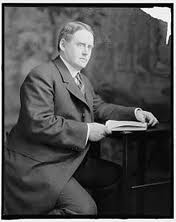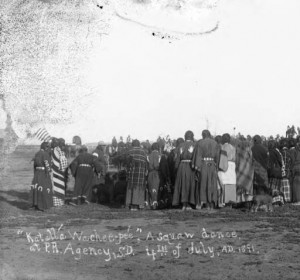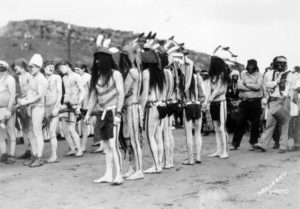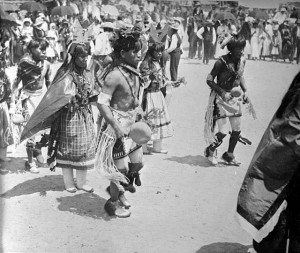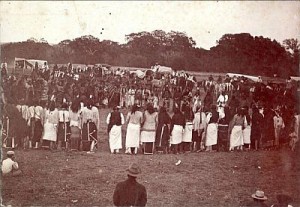Native American dancing caused controversy for several reasons (see last post). Missionaries saw paganism or sexual immorality in dancing, and also considered it a hindrance to their efforts to convert Indians to Christianity; the Indian Office felt that traditional dancing impeded Indians’ assimilation into white culture. Commissioner of Indian Affairs, Charles Burke, had threatened action if dancing wasn’t sharply curtailed, and this was no idle threat. The Religious Crimes Code of 1883 gave agency superintendents authority to use force or imprisonment to stop practices they felt were immoral, subversive, or counter to government assimilation policies. Though all Native American dancing was denounced, government attention and a great deal of controversy eventually centered on the Pueblos and their dances.
By the time Burke issued his directives against dancing (Circular No. 1665 and its supplement) in 1921 and 1923, the changing times brought a bit of opposition he hadn’t anticipated. By the 1920s, a group of reformers, intellectuals, artists, and other non-traditionalists had begun to support Native American culture. They pushed back against Burke and others with an assimilation agenda, and eventually drummed up enough publicity and legal opposition to defeat some of the more outrageous demands of whites in power. They particularly used the guarantees of religious freedom as a weapon to defend native culture; both Pueblos and their white supporters emphasized that dancing was part of Native American religious ceremonies.
As time went on and more liberal views of Native American culture emerged in Congress, Burke and others of like mind began to lose power. Former Commissioner of Indian Affairs, John Collier, writing in his memoir, From Every Zenith, described a visit to a Navajo reservation in the late 1920s. During that visit, two senators, a government attorney, and the assistant commissioner of Indian Affairs, J. Henry Scattergood, danced the squaw dance with the unmarried Navajo girls.
______________________________________________________________________________________
